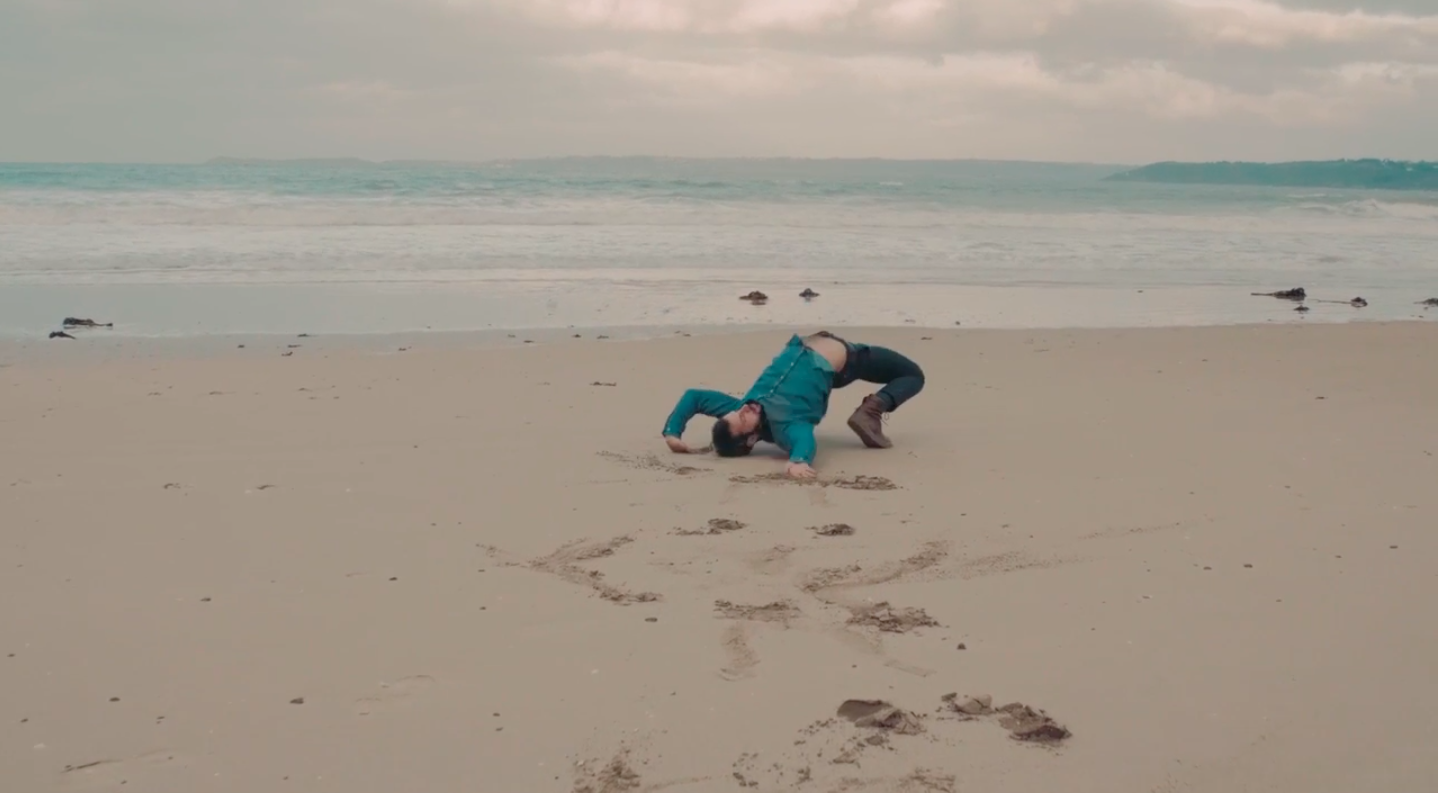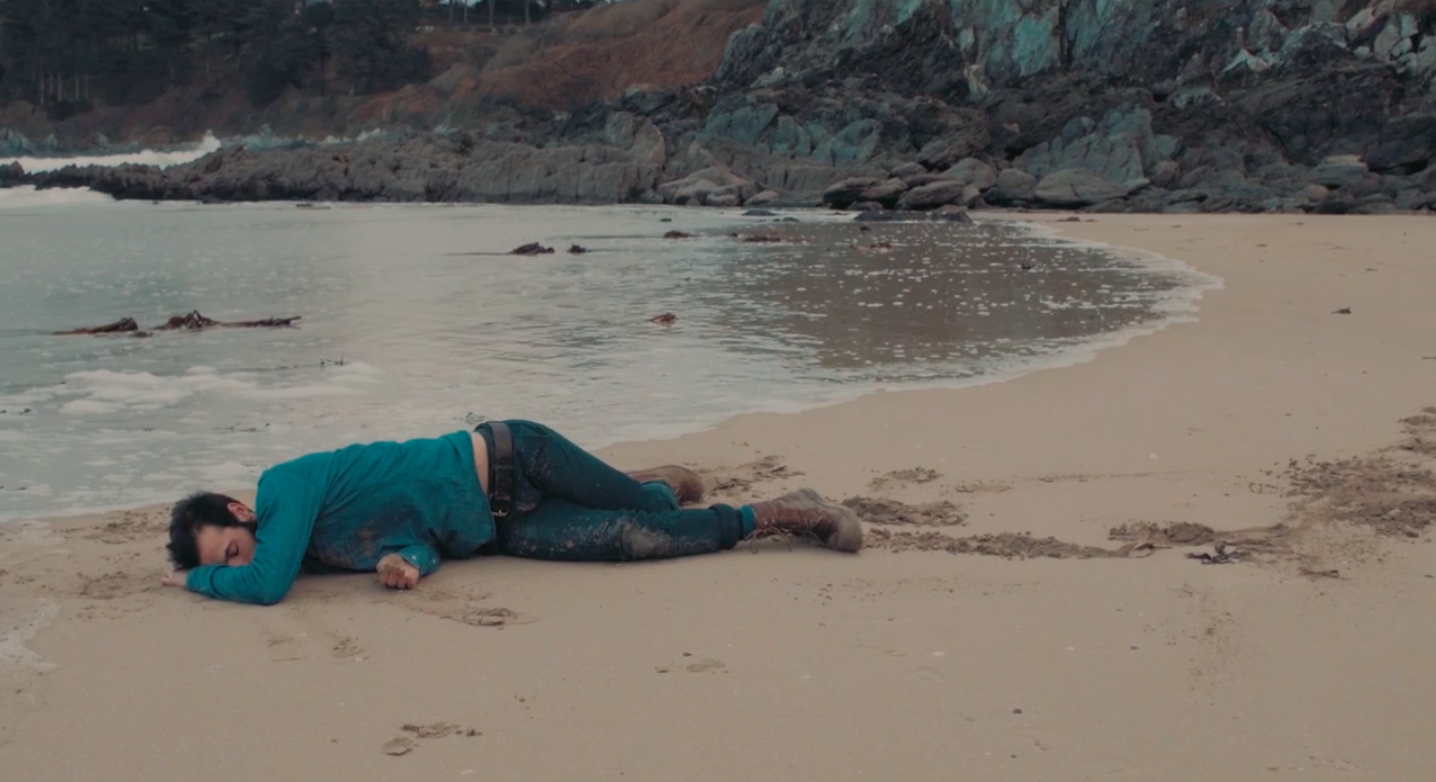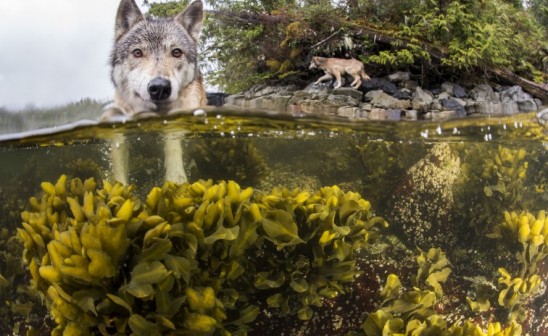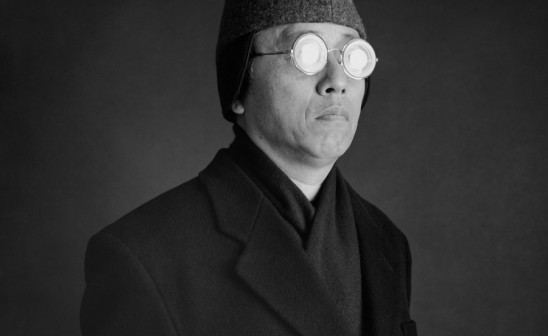We can walk down, get up, undulate. Our lives are necessarily shaped by these wave movements.
Born from the desire of creating images based on the concept of movement, « Waves » is a short film co-directed by French directors Thibaut Ras and Bertrand Guerry. As part of a choreography entitled «Le Rebond » (Bounce), this contemporary dance piece evokes the notion of resilience, the ability to recover after a fall. Attentive to the dancer’s vision and his personal interpretation, the artistic duo chose to film the live performance in one shot, on a beach in Brittany, a place with a strong visual impact. We met Bertrand Guerry and discussed about the mirror effect of the ocean on the body of French dancer, Jérémy Martinez.
Can you talk about your background?
I've been working as a First Assistant Director during 15 years. I used to work with directors from the independent scene like Gael Morel. Since 6 years now, I dedicated my time to documentaries, always working around the notion of movement. My brother, Thomas Guerry, is a dancer based in Lyon so I have a special attachment to contemporary dancing and choreography. For many years, I've been deeply attached to this movement, this kinda continuous thing which never stops. In my documentaries, there's a lot of this, a lot of work on perpetual movement.
What about your platform entitled « All we can do is dance »?
During all these years, I've met many dancers. With Thibaut Ras, we created a platform called "All we can do is dance." We wanted to take the artist out of the set and try to face him to urban or natural elements, because he's often walled in a 8x8 space. In my work, I'm used to re-create live shows: I take performances, I use the choreographic piece and put it in a specific universe. This specific piece with dancer Jérémy Martinez questions the notion of resilience, that is to say the fact of bouncing after a fall. We worked with Bruno Humbeeck, an educational psychologist, specialized in systems of resilience. He's from Belgium and works on the resilience phenomenon with images, not in a scientific way. We mixed his words with the Bounce choreography.
Can you talk more about this gestural harmony between the waves and the fluid movement of the dancer’s body?
Jérémy’s performance on the beach has a couple of readings. At the very beginning, there was this huge cube in the middle of a room which broke the educational psychology and the movement. This cube represented the failures and traumas. We can walk down, get up, undulate. Our lives are necessarily shaped by these wave movements. It means that from the ground, we always get up. It's fundamental on the notion of undulation. The physical undulation was also a reminder of the psychological one, the fact of turning around in our head. It was an echo to the fact of brooding over.
How did you conceptualize your idea?
I wanted this film to be shot in one long take, so we defined a playground with the artist. I wanted the sky to be loaded with clouds in order to avoid shadows on the sand. Because it would have given another meaning to the film. So it was shot under a grey sky, on a sand beach at low tide so the sand would still be a bit wet. Half an hour after the performance, the footprints were gone.
Why did you decide to organize the performance near water?
Obviously, this body movements can be called a « wave movement » because it simply made me think of a wave. I wanted to highlight this wave outside water. Besides these movements of coming and going, we also can find other similar movements on earth, other similar systems of waves. We did this film on the coast of Brittany because there were a game of tides. It could easily remind the come and go. That’s why we used the reverse effect as well. This symbol of tide is also a way to say that sometimes, when we take a problem from the beginning, we can find a solution. It’s also a way to say that we should not remain static. In the film, Jérémy makes waves and, at a certain moment, he stops. The camera overpasses him and we understand that he’s in the bad position, stuck on the ground. The bad position is the one on the ground because the waves can cover him, he can be trapped in a movement of water, unable to control anything. The reverse effect was meant to say that, no matter what, we don’t have to stop but instead take the path back to find another direction. Don’t take the direction that leads you to the ground.
Tell us more about the game on footprints on the sand.
Through rolling on the ground, obviously we write stuff and leave a trace. There’s a game on memory, on what we write and on what can be deleted. In the reverse effect, we have this kind of thing that leaves a trace but that will be lost and deleted by the ocean. I wanted to work on the path we draw, the one we don’t see physically, and the footprints we leave somewhere. I wanted to tell ourselves that we all leave footprints somewhere and that this track has to be considered. This is fundamental. We’re not only humans moving forward, but we actually leave a trace. And the idea of the sand allowed me quite quickly to leave footprints and directions.
How would you describe your personal relationship to the ocean?
I’m fascinated by the ocean. After the first interpretation of the wave that renews, obviously the ocean means the infinity. It means that the Man is always a grain sand, another grain sand on the beach. The strength of the water, its undulations, are something fascinating. In the film, when Jérémy’s body comes very close to the water, there’s something divine about it. There’s a real respect of the ocean, a respect of this place. The reverse effect allows us to say « avoid to get trapped into something which is bigger than you ».
It seems hard to find words to explain the story that images tell so well, doesn’t it?
Exactly, this film is something I like to watch but it is hard to explain. Jérémy has a fascinating body, this is not an average people body. This body in this sand with this ocean, is an association that goes beyond the words. We just have to be contemplative. The soundtrack gathers all the space. I didn’t want to cut this sequence-shot. It’s fluid, there’s a link between the camera, the body, the idea of distance, the fact of becoming closer, and the parts of the body.
Film directed by Bertrand Guerry and Thibaut Ras
Dancer: Jérémy Martinez






